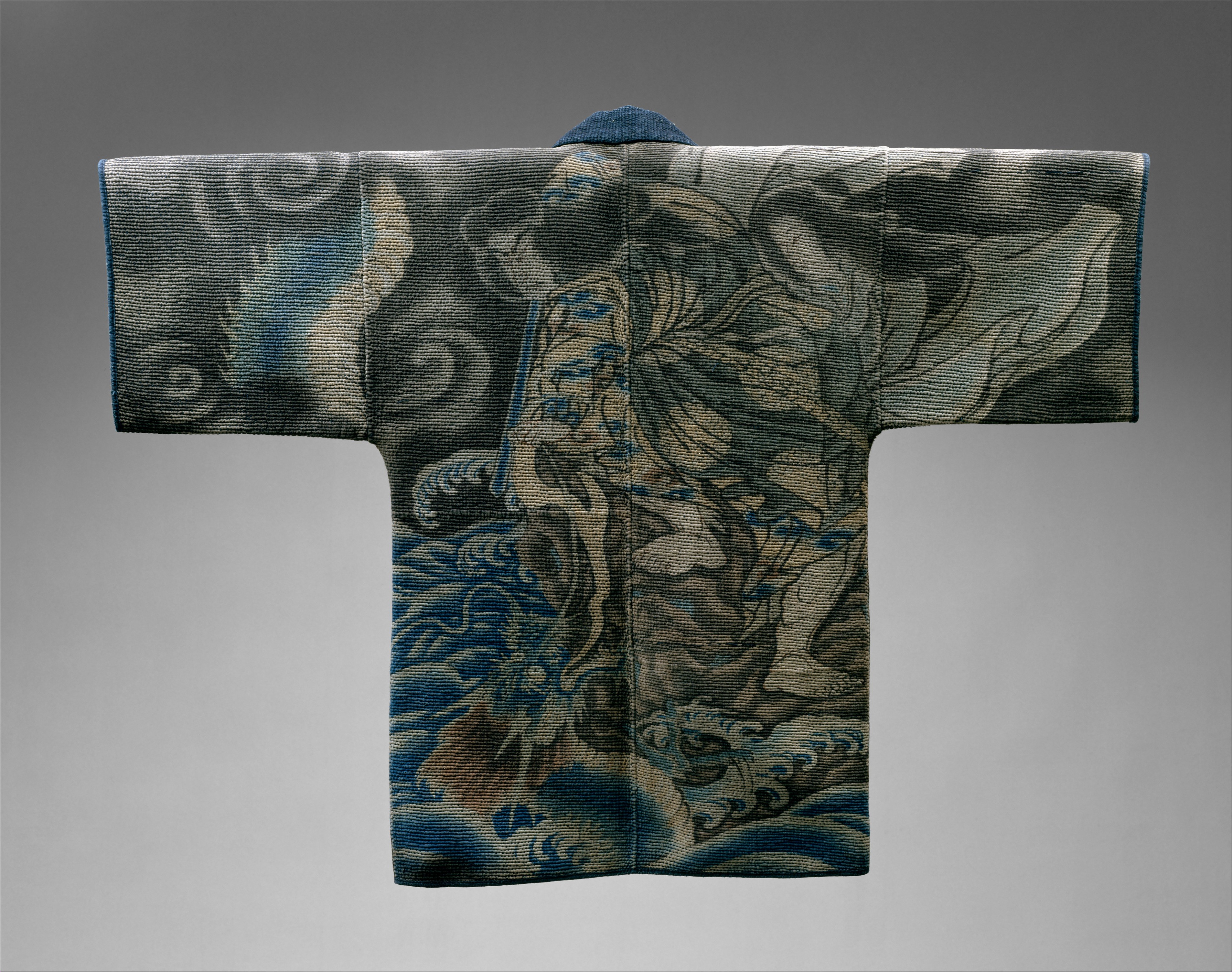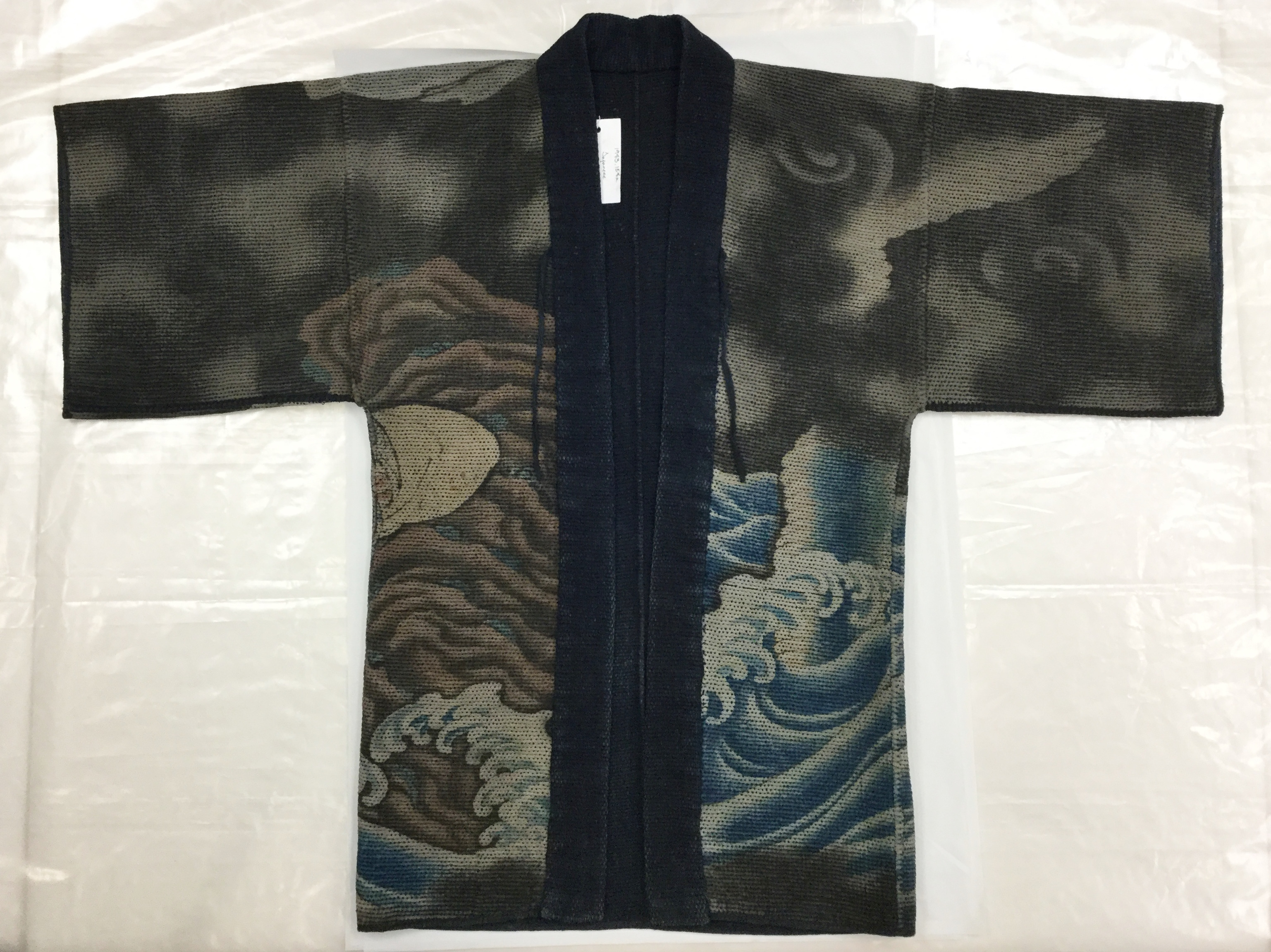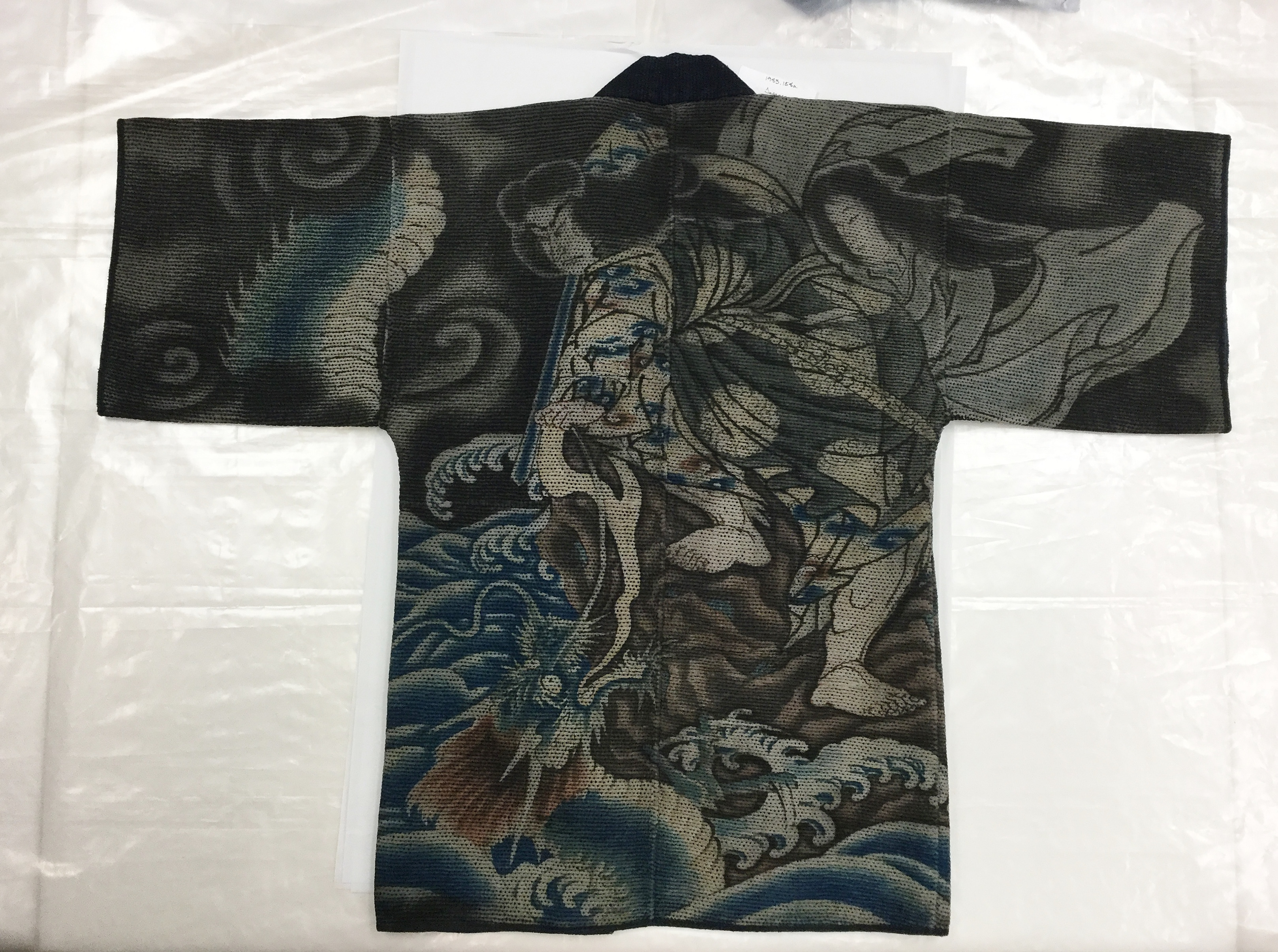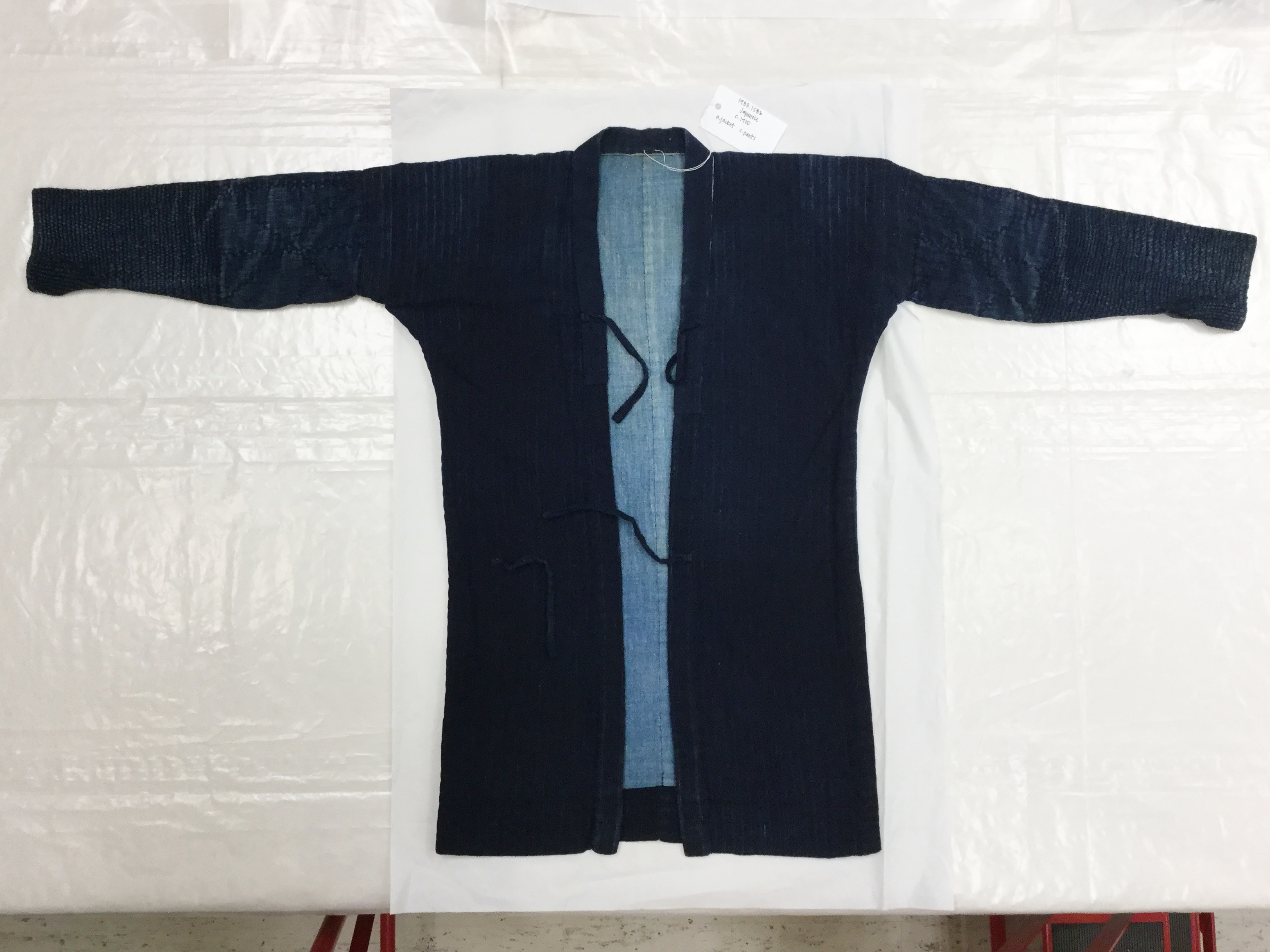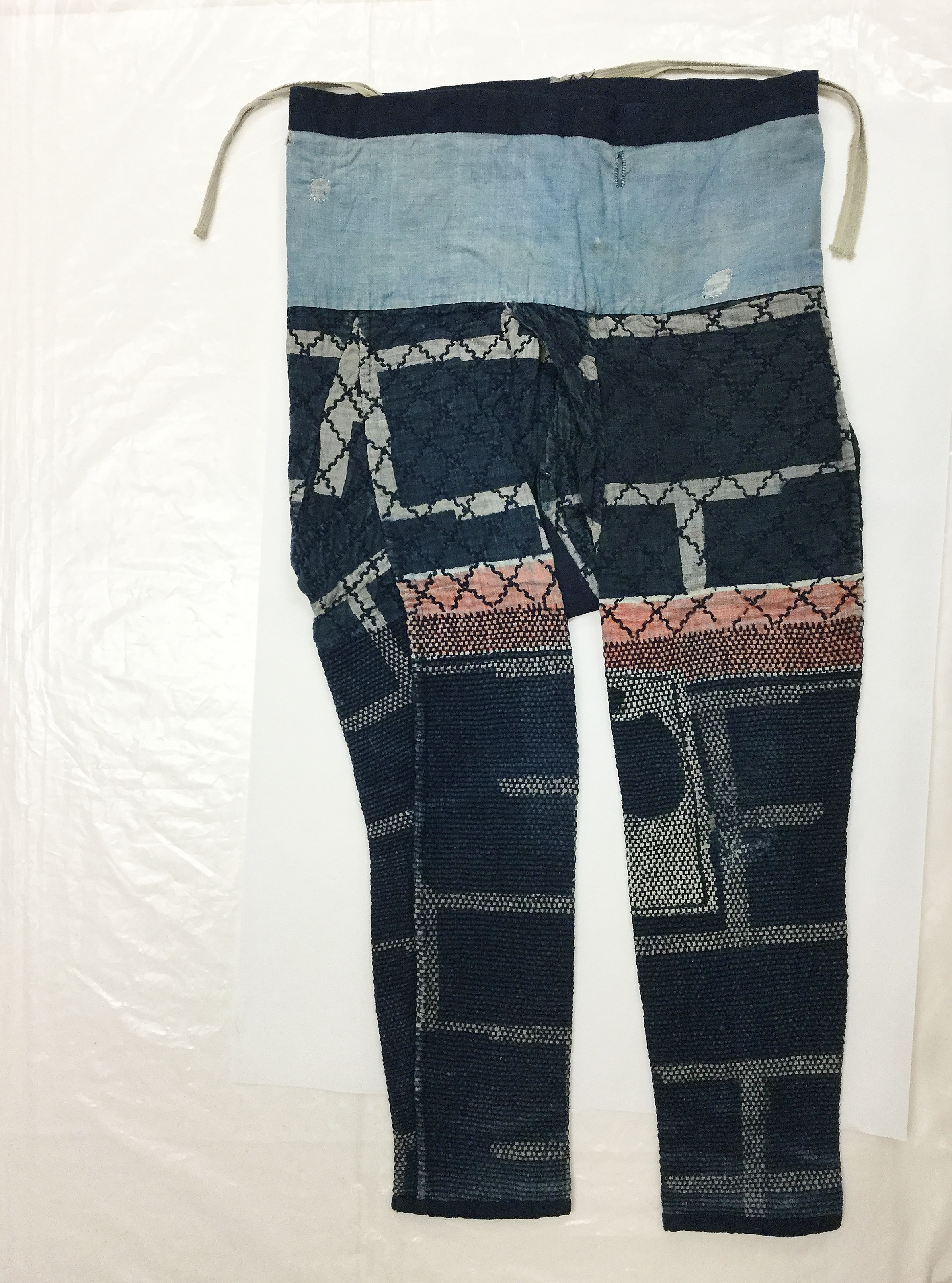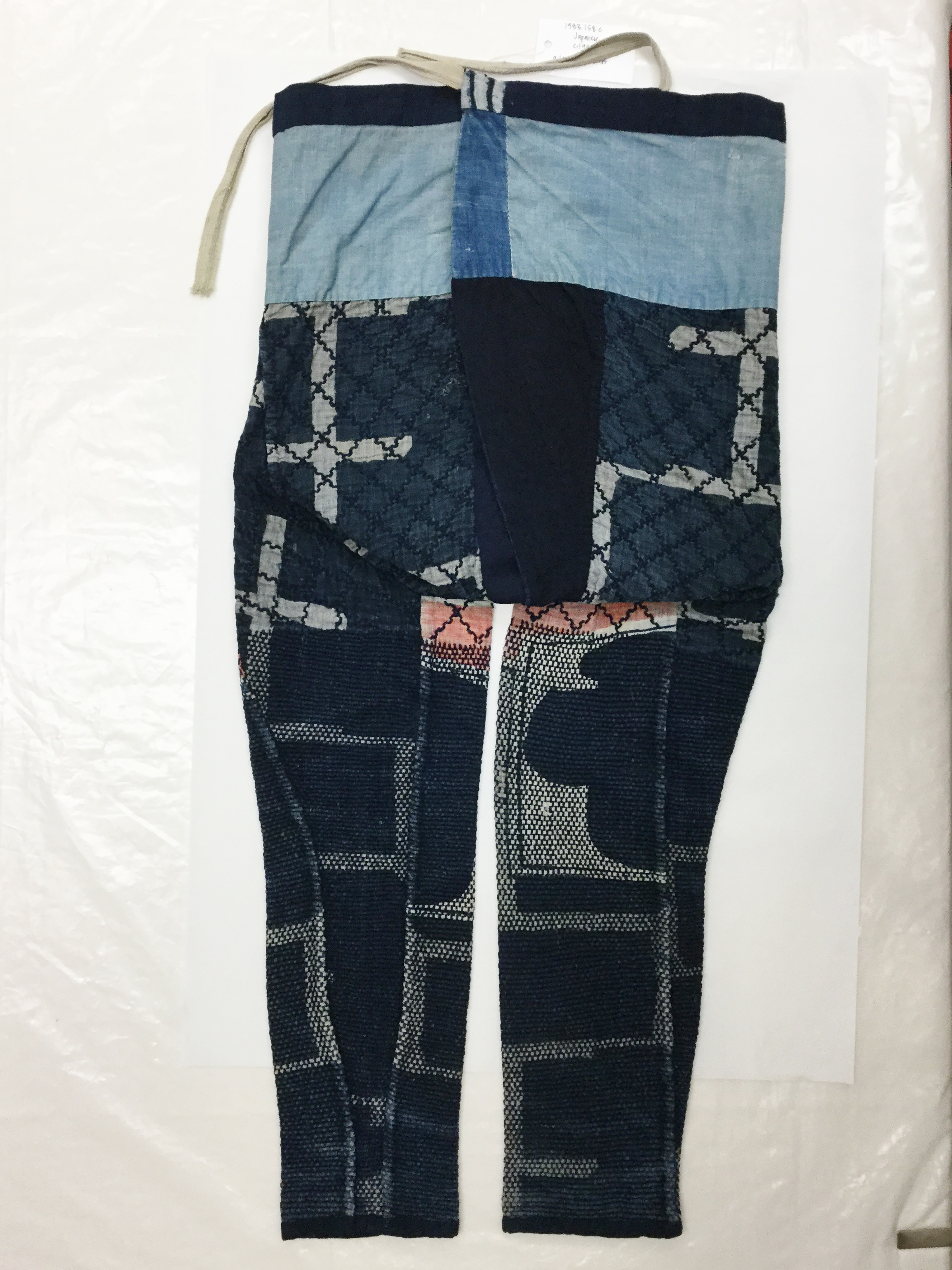Fireman’s Jacket (Hikeshi-Banten) with Susanoo-no-mikoto Deity Scene
Not on view
Decoration was important to firefighters’ garments, which were far from purely utilitarian uniforms. Firefighters enjoyed respect and high status in urban Japan, especially in Edo, where wood architecture and crowded living conditions led to frequent outbreaks of fire. Commoners wore reversible coats (hikeshi-banten) made of thick, quilted cotton fabric, with a plain indigo-dyed exterior and an elaborately decorated interior. The inside of the quilted jacket here depicts a climactic scene from a legend recorded in the Kojiki (Records of Ancient Matters, ca. 711): Susanoo-no-mikoto, the younger brother of the sun goddess, Amaterasu, saves the eighth and last daughter of an elderly couple from being taken by a monstrous serpent. Trousers and an inner jacket complete this set; gloves and socks as well as head gear of the same material would also have been part of the ensemble.
Due to rights restrictions, this image cannot be enlarged, viewed at full screen, or downloaded.
This artwork is meant to be viewed from right to left. Scroll left to view more.


